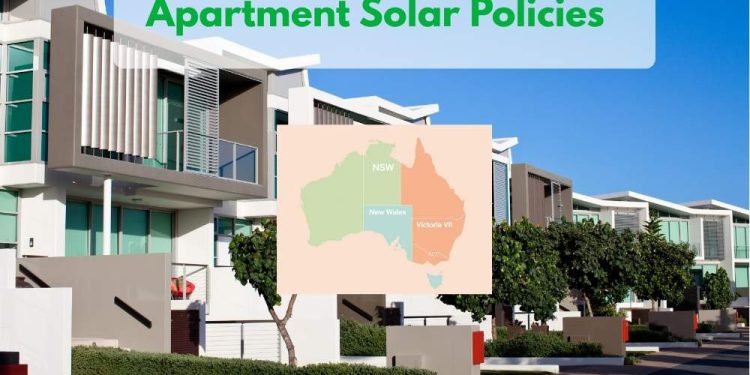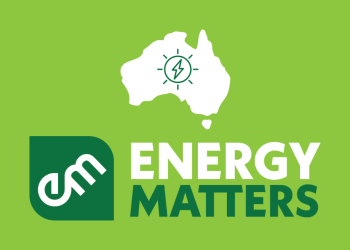For years, rooftop solar has been the domain of detached homes, an easy win for households with full control over their roof space and energy use. Apartment residents, meanwhile, have watched from the sidelines. Shared ownership, complex metering, and strata approval hurdles have kept many from accessing the same clean energy savings enjoyed by suburban homeowners.
That’s beginning to change. Across Australia, new state programs are rewriting the rules to make star power possible for multi-unit dwellings. New South Wales’ (NSW) Solar for Apartment Residences (SoAR) program is leading the way, offering generous grants and federal support to help state buildings generate and share their own power. But it’s not alone. Victoria (VIC) and the Australian Capital Territory (ACT) have taken different routes to bring solar within reach of apartment owners and tenants, each with its own funding model, eligibility rules, and success rate.
So, which approach works best?
NSW: Leading the charge with SoAR
NSW has taken the most direct approach to apartment solar so far. The SoAR program combines federal and state funding to help state buildings install shared rooftop systems. It covers up to 50% of project costs, capped at $150,000 per site, to make solar viable for apartment complexes that have long struggled with the cost and coordination barriers.
So far, the results are promising. More than 30 projects have already been approved across the state, representing over 1.1 megawatts of solar capacity and cutting energy bills for more than 500 apartments. For residents, that can mean up to $600 a year in savings, a meaningful reduction for many renters and owners in urban areas.
Initially set to close in December 2025, the SoAR program has now been extended until March 2026 to give more strata communities time to plan and apply. This extension reflects both the program’s early success and the recognition that apartment solar projects take longer to coordinate than single-dwelling systems.
The program’s strength lies in its inclusivity. By targeting strata bodies rather than individual owners, SoAR encourages collective action and allows buildings to benefit from shared systems that would be impossible to install unit by unit. The use of technologies like SolShare, which enables fair solar distribution among individuals in metered apartments, has also been a breakthrough.
Still, the rollout hasn’t been without challenges. Securing strata approvals can take months or even years, and some projects have required complex technical designs to accommodate limited roof space. One Sydney complex reportedly took nearly five years from planning to completion. Even so, SoAR is proving that with the right incentives, patience, and coordination, shared solar for apartments isn’t just possible, but finally practical.
VIC: Apartment Solar Program
VIC’s approach to apartment solar sits within its long-running Solar Homes Program, but it takes a slightly different form. Rather than funding shared rooftop systems for an entire building, the Solar for Apartments rebate focuses on helping individual apartment owners or body corporates install solar on suitable rooftops or embedded networks. Eligible participants can receive up to $2,800 per apartment toward the cost of a system.
This structure makes VIC’s program more flexible in some ways (individual owners can act without waiting for full-body approval), but it also limits the scale of shared projects. Without the same collective framework that NSW’s SoAR provides, each owner must navigate eligibility, metering, and installation separately. That’s slowed uptake, especially in buildings with limited roof access or complicated ownership arrangements.
Where VIC excels is in consistency. The apartment rebate is fully integrated with its broader Solar Homes ecosystem, giving applicants access to streamlined tools, accredited installers, and optional battery support. It also aligns with the state’s steady push toward net zero, ensuring apartment residents aren’t left out entirely.
However, VIC has yet to see the kind of large-scale, shared installations emerging in NSW. The result is a policy that works well for proactive owners, but less so for renters or those in tightly managed strata schemes. The ambition is there, but the execution still favours individual participation over community-level change.
ACT: Community-scale and body corporate incentives
The ACT has taken a community-first approach to apartment and shared solar, integrating it into the territory’s broader renewable energy framework rather than treating it as a stand-alone grant. Through the Next Generation Energy Storage initiative and the Sustainable Household Scheme, apartment owners, landlords, and body corporates can access interest-free loans of up to $15,000 for solar and battery systems, including shared installations.
While smaller in scale than NSW or VIC, the ACT’s program is tightly aligned with its 100% renewable electricity target. It prioritises long-term participation and resilience over short-term grants, encouraging collective systems that can include both rooftop solar and shared battery storage. This has allowed many developments, including strata communities and housing co-ops, to integrate energy storage alongside generation.
Unlike NSW’s grant-based funding or VIC’s rebates, the ACT’s system places the financial responsibility on owners but makes adoption easier through zero-interest financing and community support frameworks. The result is slower but steadier uptake, a reflection of the territory’s focus on integration and sustainability rather than speed.
Who’s really ahead?
Each state’s approach reflects a different philosophy. NSW is prioritising scale and accessibility through grants, VIC is focusing on integration within its established Solar Homes program, and the ACT is proving that community-driven financing can deliver long-term stability.
Here’s how they compare:
| Feature | NSW (SoAR) | Victoria (Solar for Apartments) | ACT (Sustainable Household Scheme) |
| Funding structure | 50% of project cost, capped at $150,000 | Rebate up to $2,800 per apartment | Interest-free loans up to $15,000 |
| Eligible applicants | Strata bodies, owners’ corporations | Individual apartment owners or body corporates | Homeowners, landlords, and body corporates |
| System type | Shared rooftop systems (SolShare enabled) | Individual or shared rooftop systems | Shared or community-scale solar and battery systems |
| Program status | Extended to March 2026 | Ongoing under Solar Homes Program | Ongoing |
| Uptake so far | 33 projects, 1.1 MW installed | Limited public data; modest uptake | Moderate participation, steady growth |
| Average benefit per unit | Up to $600 savings annually | Around $2,800 upfront rebate | Energy bill savings plus flexible loan terms |
| Biggest barrier | Strata coordination and long approval timelines | Limited roof access and owner coordination | Smaller project scale |
| Standout strength | Large-scale funding and federal partnership | Integration with existing solar incentives | Zero-interest finance and community alignment |
While each program is structured differently, NSW currently stands out for its ambition and funding scale, while VIC and the ACT provide steadier, more integrated pathways that may prove more sustainable in the long run.
Apartment solar is no longer a fringe idea — it’s becoming essential to Australia’s clean energy transition. Each state’s approach offers a different piece of the puzzle, but together they point toward a future where access to rooftop power isn’t limited by postcode or property type.
Energy Matters has been in the solar industry since 2005 and has helped over 40,000 Australian households in their journey to energy independence.
Complete our quick Solar Quote Quiz to receive up to 3 FREE solar quotes from trusted local installers – it’ll only take you a few minutes and is completely obligation-free.















